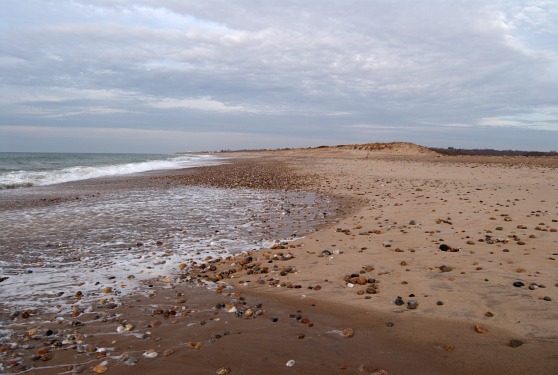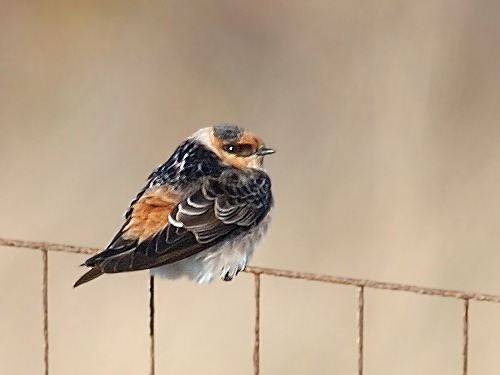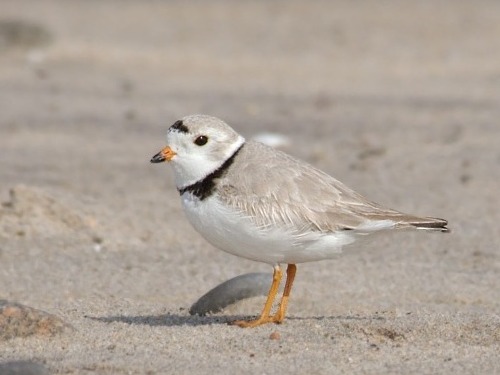Moonstone Beach - South Kingstown
The parking area at the end of Moonstone Beach Road provides access to a barrier beach and three coastal ponds. The short trail from the parking area to the beach provides enough elevation to get clear views of the ocean and the fields of the Trustom Pond National Wildlife Refuge.
View Larger Map
Location
South Kingstown, RI.Owner/manager:
Most of Moonstone Beach is part of the Trustom Pond National Wildlife Refuge.US Fish and Wildlife Service, Refuge Headquarters 50 Bend Road, Charlestown, RI 02813
Directions
Moonstone beach is at the south end of Moonstone Beach Road. Drive to the turnaround at the southern end of Moonstone Beach Road, turn around and park on the east side of the road. Do not park in the turnaround area.
Habitat
Ocean, Ponds, Salt Marsh, Fields and Sand Dunes

Moonstone Beach
Description
The parking area at the end of Moonstone Beach Road provides access to a barrier beach and three coastal ponds: Mud Pond (adjacent to the parking area), Card’s Pond (about 0.25 miles east along the beach) and Trustom Pond (about 0.5 miles west along the beach). The short trail from the parking area to the beach provides enough elevation to get clear views of the ocean and the fields of the wildlife refuge.

Mud Pond
Mud pond drains into Card’s Pond which drains into the ocean. The outlet of Card’s Pond is usually blocked by the beach but occasionally the outlet breaches the beach lowering the water level of both ponds. When the water level is low, the exposed mudflats attract shorebirds and herons.
Best Seasons to Visit
Fall and winter.Birds Most Likely to Be Seen
At Card’s Pond and Mud Pond
When the water level is low, shorebirds and herons often feed on the exposed mud flats. Birds that can be seen here in the fall include: Greater and Lesser Yellowlegs, Killdeer, Wilson's Snipe, Least Sandpiper, Semipalmated Sandpiper, Semipalmated Plover, American Bittern, Great Blue Heron, Great Egrets and Snowy Egrets. Sora can sometimes be seen feeding in the vegetation on the edge of Mud Pond. Sanderling, Dunlin and Black-bellied Plover are possible throughout the fall and winter. When the water is not frozen, ducks often visit the ponds. Ducks that can be seen here include: Green-winged and Blue-winged Teal, Ring-necked Ducks, Northern Pintails, Greater and Lesser Scaup, Canvasbacks, Ruddy Ducks, Common Goldeneye, Hooded Mergansers, and Northern Shovelers.
Fields
Red-tailed Hawks and Northern Harriers often hunt over the fields. During some winters this is a good place to look for Rough-legged hawks and Short-eared Owls.
Ocean
In the fall, Northern Gannets can sometimes be seen in large numbers as they feed close to shore. Birds that spend the winter near shore include: Red-breasted Mergansers, Common Eider, Surf Scoter, Black Scoter, Common and Red-throated Loons, Common Goldeneye, Horned Grebe and Great Cormorant.
Sand Dunes and Beach

Cave Swallow
In the fall, small flocks of Snow Buntings sometimes feed along the beach. In fall and winter, Horned Larks and Ipswich Savannah Sparrows can be found along the sand dunes. In mid November, the beach is a good place to look for the Cave Swallows that mysteriously show up along the New England coast. They can sometimes be found mixed in with the more common Tree, and Barn Swallows.
Birds that May be Seen in Other Seasons

Piping Plover
During the spring and summer, the beach is closed to protect the nesting Piping Plovers and Least Terns.
Potential obstacles
- South Kingstown Residents Stickered Vehicles Only, May 1 to Sept 15, 7AM to 4PM.
- Except for the small section of beach directly at the end of Moonstone Beach Road, the beach is closed from April 1 to September 15 to protect the nesting Piping Plovers and Least Terns.
- No sunbathing (chairs, tents, blankets, etc.).